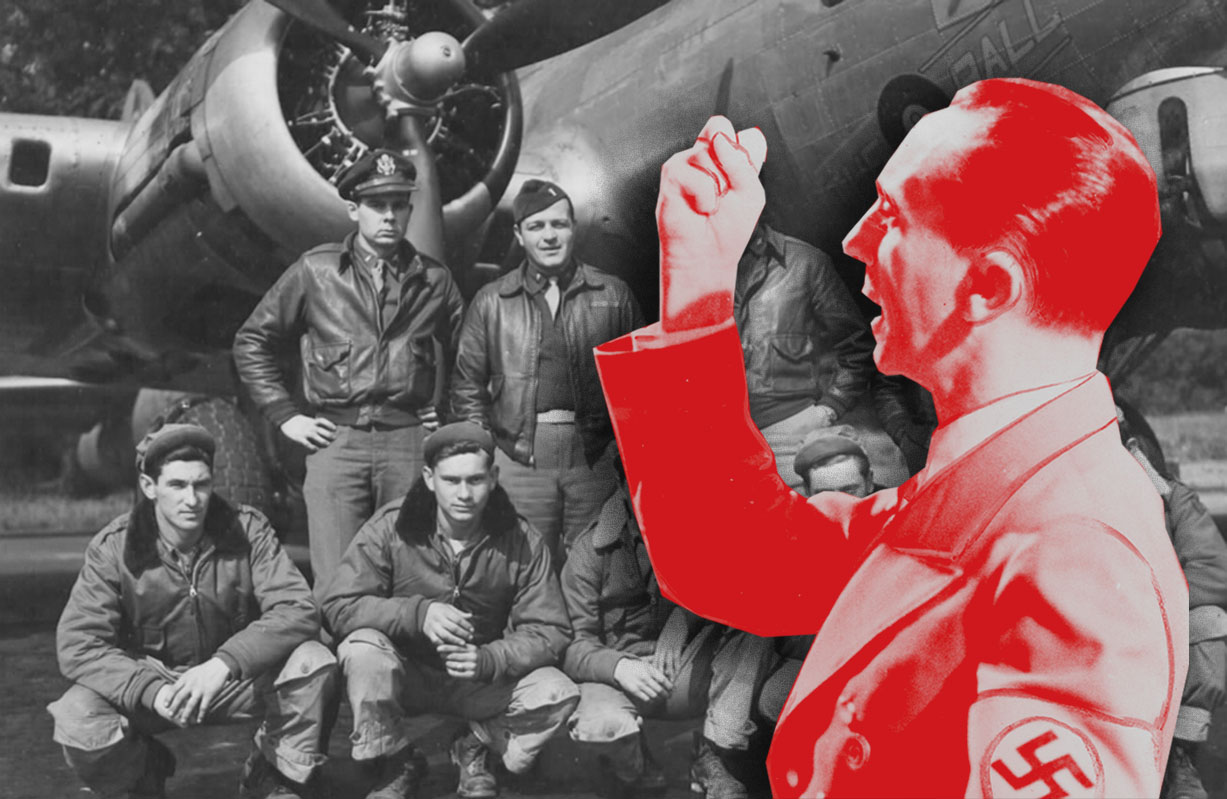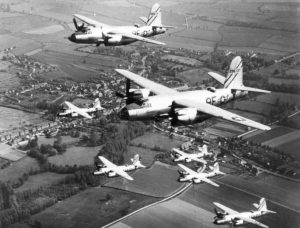
Dropping by parachute to escape fiery death in the sky, hundreds of Allied airmen were murdered after touching German soil by frenzied civilians wielding shovels, pitchforks and rocks.
“They would spit on us, and stone us,” remembered U.S. Army Air Forces Sgt. Warren Hampton, captured after his B-26 bomber was shot down on his eighth mission on Dec. 23, 1944. He was taken to Nuremberg as a prisoner. “At every railroad station, they would swarm around us and throw stones.” Hampton was lucky to survive.
German civilians slaughtered Allied airmen throughout cities and small villages across the whole country, including in Saarbrucken, Solingen, Pforzheim, Ingolstadt, Rostock and Borkum, to name just a few places. Supposedly this was spontaneous violence due to “local anger” about Allied air raids.
Yet these killings were not unprompted incidents—they were brought on by a systematic campaign led by Nazi Propaganda Minister Joseph Goebbels.
An Excuse for Violence
Goebbels claimed that civilians had a “right” to exact murderous revenge on Allied aircrews because the Allies were bombing German cities.
He had double standards. The Germans had started the air war, and invented the incendiary bomb. Under Nazi leadership, the Luftwaffe had egregiously bombed communities in Spain, Poland and Britain, killing thousands of civilians. The German bombing of Coventry in 1940 resulted in a “city of lost souls,” according to the BBC, causing mass hysteria and destroying 41,500 homes in a single night. The local mortuary was overloaded, “seeing 60 bodies in one hour. Some 40 to 50 were unidentifiable, owing to mutilation.”
During the London Blitz, German planes strafed civilians in the streets. The Nazis also sought to destroy cultural heritage. After an air raid on Portsmouth in 1941, German radio propaganda boasted of having destroyed HMS Victory, flagship of British war hero Admiral Horatio Nelson (although in reality the ship was not destroyed, but merely damaged).
“The Nazi strategy was to make terror,” according to German historian Jens Wehner.
Although they were happy to cause destruction for others, Goebbels and fellow Nazi leaders claimed it was “immoral” when the Allies used similar tactics against them.
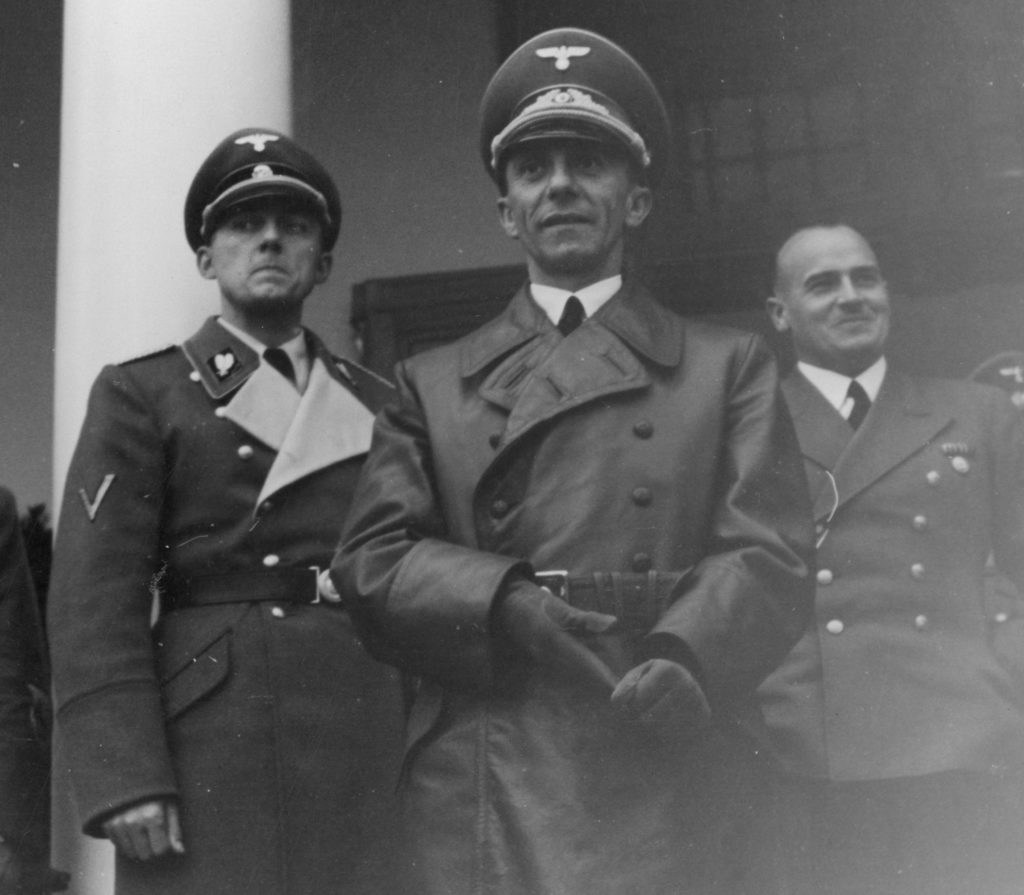
As early as March 1940, Rudolf Hess issued an order that enemy parachutists were to be immediately arrested or “rendered harmless.”
In addition, Nazi Party manufacturers produced toys and games for children and young adults to teach them to hate Allied airmen. These included “air defense” board games as well as card games, in which players were trained to identify and destroy Allied aircraft.
However, the drive to kill Allied airmen gained impetus over time. In particular, the execution of the Doolittle Raiders by Imperial Japan in 1942 provided Adolf Hitler’s regime with an excuse to openly justify plans to murder Allied airmen.
In July 1943, Germany’s Oberkommando der Wehrmacht (high command of the armed forces) banned military burials for Allied airmen. An order from Heinrich Himmler on Aug. 10, 1943, to SS and police forces forbade them from intervening in any local confrontations with Allied airmen who survived parachute landings.
“We would … eventually make it a legal process to condemn shot-down Anglo-American ‘murder pilots’ to death and also enforce the death penalty against them,” Goebbels wrote in his diary on Dec. 22, 1943. “It’s a very far-reaching plan, but under certain circumstances could lead to a noteworthy result.”
But Goebbels eventually decided no legal processes were needed. It would be easier for him to use his vast propaganda machine to transform local civilians—ordinary men, women and young adults—into his willing henchmen. To turn German civilians into bloodthirsty executioners, he convinced them they were above the law.
Mobilizing the Mob
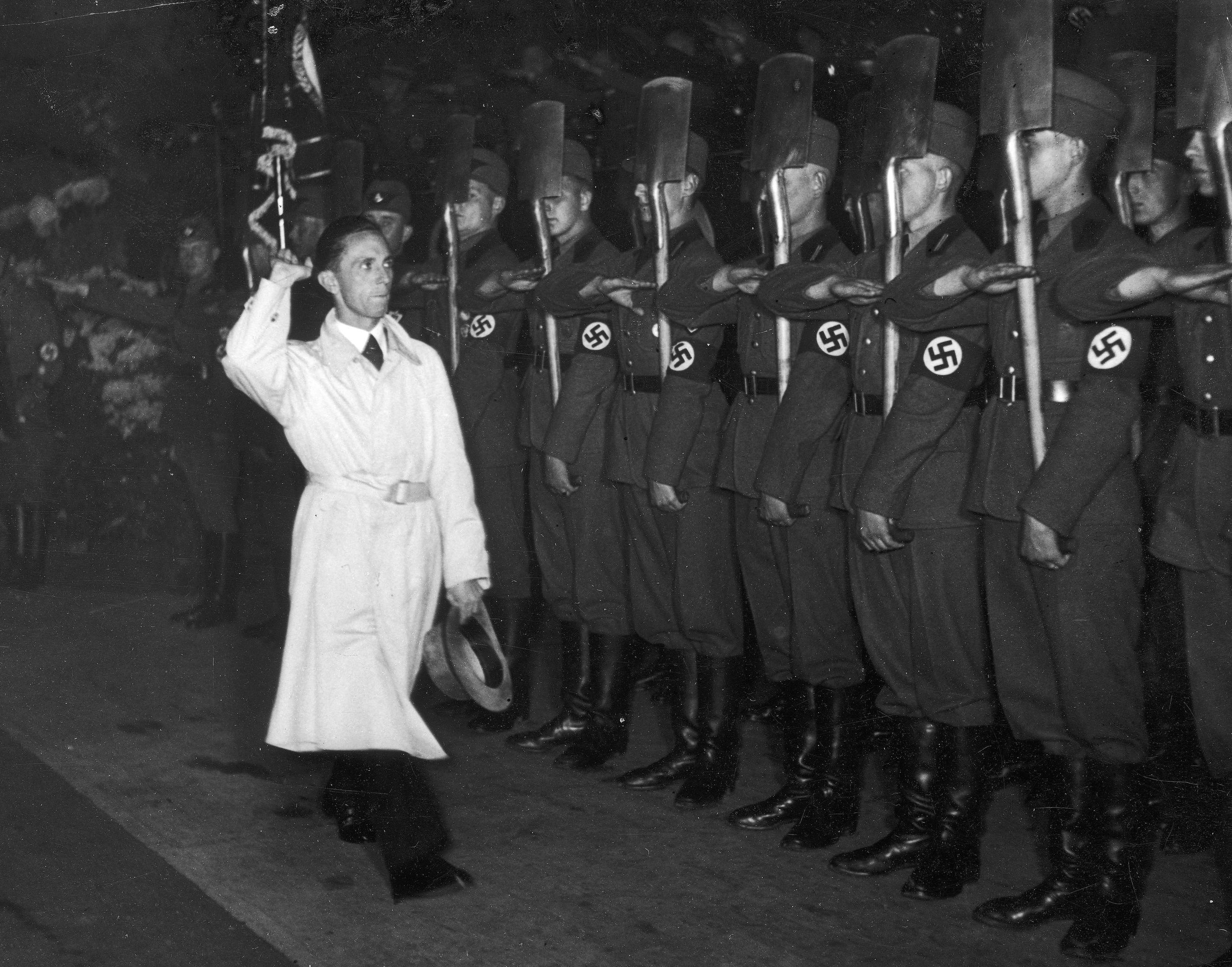
The first thing Goebbels did was change the definition of an Allied airman. He began this process in 1943. Per his orders, radio and print publications eliminated the words “pilot,” “air crew” and “plane” from official vocabulary.
Instead, Allied air personnel were referred to by derogatory epithets such as “terror flyer” (Terrorflieger), “murder flyers” (Mordfliegern), “air gangsters” (Luftgangstern), and even “air barbarians” (Lufthunnen). The purpose of this was to demonize the airmen and change civilian feelings about them.
Since German culture respects soldiers, Goebbels also took steps to discredit the military status of the airmen. He claimed they were “criminals” and not soldiers. He also initiated false reports that the airmen were “killers for hire” who collected bounties from the Allied governments based on civilians they killed.
“While the uniform is a garment of honor for German soldiers, for the ‘Air Gangsters’ it’s a work suit of a criminal,” a June 1943 propaganda article engineered by Goebbels claimed in the Marburger Zeitung newspaper.
Goebbels frequently adopted scare tactics in his propaganda. He claimed Allied airmen were hell-bent on destroying everything Germans held dear, invoking images of scenic villages, charming old churches and innocent children in articles and speeches. To suggest violence, Goebbels produced reports to give civilians deadly ideas, suggesting “lynch” justice would be “inevitable.”
“Nobody would wonder that our people … should be overwhelmed with raging fury in the face of these cynical crimes,” he wrote in the Volkischer Beobachter on May 29, 1944, in his introduction to a series of articles on “terror pilots.” He suggested civilians should “take a step toward self-help and get even with pilots who spring out of enemy planes.”
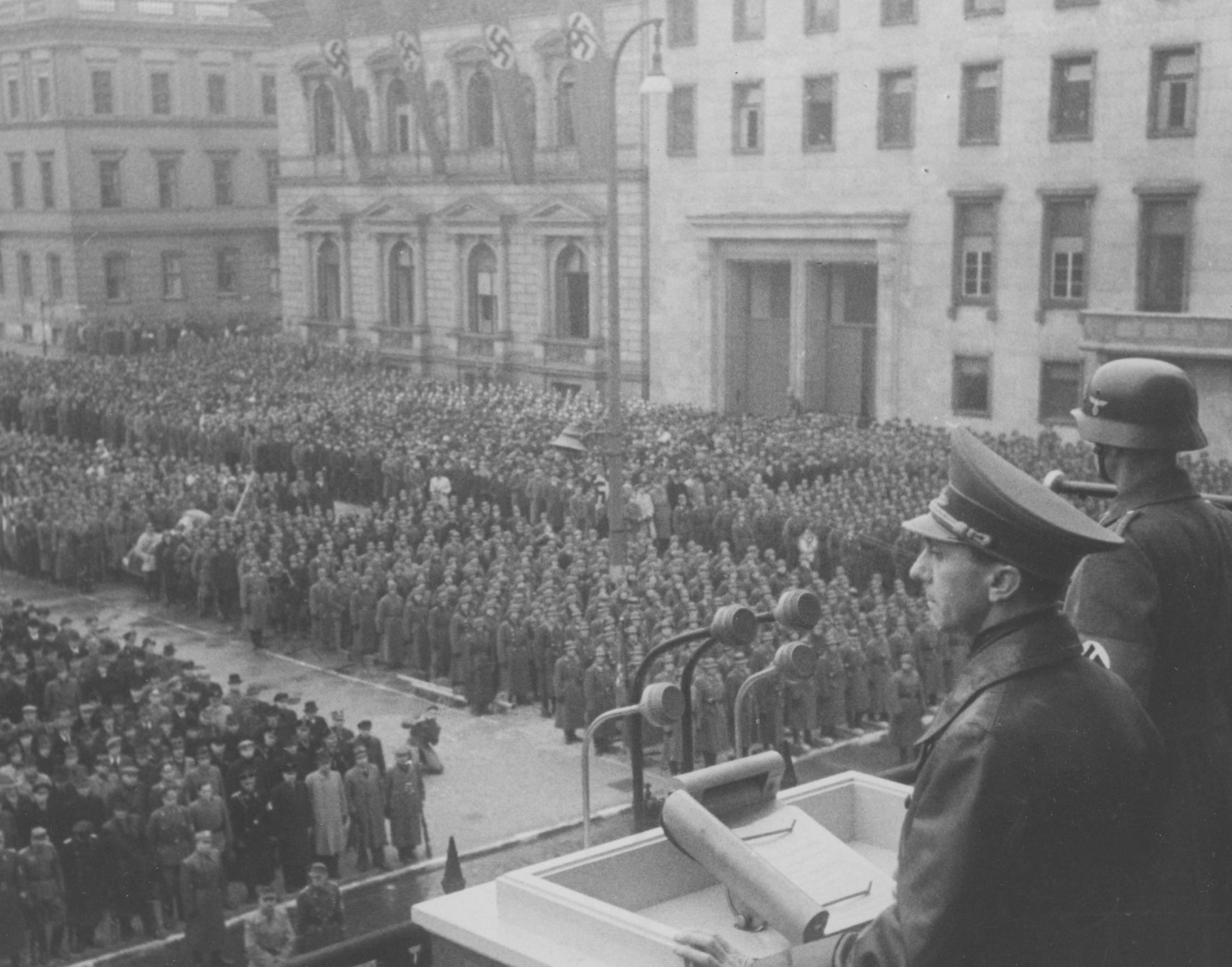
Goebbels also encouraged any Germans who might be considering murder by saying the government condoned it. He incited civilians in Nuremberg with a graphic and inflammatory speech in May 1944.
“You, the people, have beaten them [the airmen] to death or cut their throats—and similar things,” Goebbels announced to a cheering crowd on Nuremberg’s old town square. “We won’t shed any crocodile tears over it, and whoever [among you] who has done this will not be led to the scaffold. We are not so insane [as to punish you]. We can understand this rage of the German people very well.”
Hitler lent his full support. On July 5, 1944, the Führer issued a Top Secret order entitled “Concerning ‘Terrorist Airmen,’” in which he decreed that any British and American airman answering to Goebbels’ description of a “terrorist” would not be treated as a POW but “will be killed as soon as he falls into German hands.”
The Victims
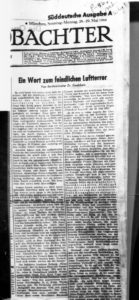
Countless men from Allied nations including the U.S, Britain and Australia died as a result of Goebbels’ propaganda campaign and the malice of individual civilians who felt empowered by a “license to kill.”
In Borkum, an American B-17 crew who made an emergency landing were shot and beaten to death with shovels by locals. After the war, a U.S. military tribunal at Dachau put 15 Germans on trial for the murders.
A 21-year-old British airman, Cyril William Sibley, was murdered in Dirmstein after initially being helped by a kind local woman. Finding Sibley suspended from his parachute on a fruit tree in her garden, Maria Gastner tried to treat his injuries and gave him glasses of wine and cigarettes. Local Nazi officials soon arrived on the scene, took Sibley from her and shot him. Sibley’s remains were buried in the town cemetery, but British authorities relocated them after the war.
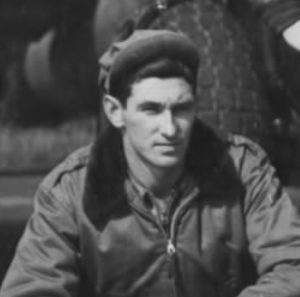
Norman Rogers, an American bomber pilot, married his teenage sweetheart, Helen, before he got orders in July 1944 to fly to Europe. Rogers had a last opportunity to fly past his home in Savannah, Ga. He performed a wing dip in the B-24 Liberator to say goodbye to his pregnant wife watching him from the porch. That was the last time she ever saw him.
A month later, Rogers and his crew in the B-24 named Wham! Bam! Thank You Ma’am were savagely murdered in Rüsselsheim by a mob of more than 100 German civilians wielding stones, iron bars and hammers. The crowd was incited by German housewives: Käthe Reinhardt, her daughter Lilo, and sister Margarete Witzler, who accused the men of being “terror flyers” and screamed: “Kill the dogs! Break them to pieces!”
One perpetrator beat the victims so hard that he broke a hammer; another, Johan Opper, injured his hands due to the sheer violence. A Nazi official, Joseph Hartgen, shot the wounded men as townspeople beat them with two-by-fours to ensure they died.
However two survived. Sidney “Brownie” Brown, 19, escaped being shot when Hartgen ran out of bullets. His co-pilot, John Sekul, was beaten to death on top of him. Sekul’s last words were: “Brownie, pray!”
As if by an act of providence, an air raid signal suddenly sounded and the mob fled, vanishing like a nightmare. Brown and his lone surviving comrade, William Adams, escaped.
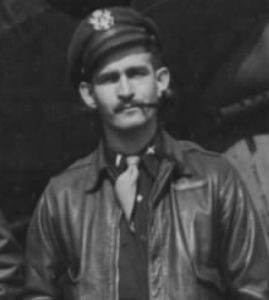
Rogers’ wife did not learn what had really happened to him until U.S. authorities informed her two years later in September 1946. By then, she was raising his daughter Madeline, who was born six months after her husband’s death.
Victims of German mob violence also included men of the 303rd Bomb Group known as the “Hell’s Angels.” On Sept. 28, 1944, during a mission to Magdeburg, the crew of Miss Umbriago were forced to bail out of their aircraft. Sgt. Leo Waldron was “dragged away by a bunch of German farmers” and murdered. In a stroke of irony, a German soldier intervened to rescue 2Lt. William F. Miller from civilians attempting to kill him and thereby saved Miller’s life.
There were so many killings of Allied airmen by civilians that a new German word came into existence to describe the phenomenon. This term has nothing to do with Goebbels’ pretenses of honor or entitlement—the word, Fliegermorde, very simply means “flyer murder.”
Some of the perpetrators of these “flyer murders” faced justice after the war ended. Yet many cases remain unknown. Locals have in many instances been unwilling to speak about dark deeds they may have witnessed or taken part in. In recent years, more information has been coming to light about these and other Nazi-era crimes in Germany as more German-speaking researchers challenge the postwar culture of silence and investigate the past. MH

